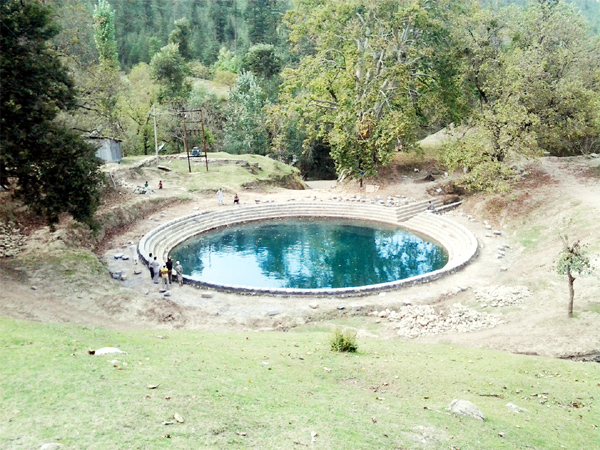Iqbal Ahmad
Please do not commit a sin, but if you have committed, then come to this spring called papsudan nag at Kothair Anantanag and have a bath , it would wash off your sins. A curious tradition preserved in the local Hindu folklore states that people in ancient times used to bath in this spring and with its healing powers, the water of this spring washed their sins as well. This spring has also been called Kapteshwara Tirtha and the village where this spring is located has also derived its name from ancient tirtha.
Kashmir valley is the land of ancient springs which have carried curious legends associated with those. There are plenty of springs found in Kashmir which are broadly classified into two major categories – hilly and plain springs. Hilly springs are those springs which are found on its hills, mountains and plateaus. Such springs rise from the rocks and then flow down towards the valley plains. While the plain springs rise in the plain valleys. People still regard these springs in high esteem for the fact that many curious legends are associated with them.
Although due to geological and environmental changes several of these ancient springs have already disappeared but still almost every village site houses a spring either small or large one even now. These springs in valley’s dialect are called Nagas. At the same time, Naga in olden traditions meant a deity believed to have been worshiped here in the ancient periods. Historians believe that in the fourth and fifth century BC, Naga worship may have been the principal religion in Kashmir”.
They write “When Budhism was the predominant faith, one of the early Kings, Gonanda, is said to have revived the ancient form of Naga worship as prescribed by Nilmathpurna. We also have the legend of Susravas Naga and mention of Padam Naga, at the Wular Lake.” Kalahana mentions the annual festival of Takasaka- Naga at village of Zewan which was “Frequented by donnrs and strolling players and thronged by crowds of spectator.
Since Naga worship has almost disappeared here but the sites associated with this tradition are still being held in good respect. Interestingly several of these ancient Nagas springs and its waters have preserved those earlier traditions One of such ancient springs with certain ancient archaeological remains is found at village Kothair. The site is located at a distance of 8 kilometers from the famous mughal garden of Achabal in south Kashmir District of Anantnag.
This ancient spring at Kothair is full of mysteries and curious traditions have added a lot to one’s curiosity. The historic spring is also called locally as Papa Sudan nag. Local traditions associated with this spring reveal that in the ancient times, the Hindu Yatris arrived here to wash their sins from its healing waters. The name given in Sanskrit—Papa Sudan also denotes the same meaning “sin washer.”
This historic spring has also got its mention in Kalhana’s “Rajtarangni,” where it is named as Kapastevara Tirtha. A tradition recorded in this 12th century chronicle states, that a man from plains known as padmaraja—the importer of Tambala leaf—-became friends with king Bhoja—the supreme lord of Malwa, by remitting heaps of gold through him to construct a pool at kapastevara, besides, taking a vow to wash his face, daily with the waters of this spring
Another tradition states that the spring tank was built by one Dacen raja called Matshankund—-who is said to had ears like that of a buffalo which he had dropped after bathing with the healing spring waters.
A local folk lore which is still sung in the area says,
Makun razas Mounshi kan
Su Kate baliyas kothair wan
(Raja Makan had Buffalo ears which got treated at kothair forest).
The ancient spring on its banks showcases the remains of several ancient buildings. Unfortunately the entire affairs at the site are in utter ruins as no basic conservation infrastructure has been provided to the site despite showcasing some wonderful remains of ancient Pandu buildings. The structural basements and few standing remains are most attractive monumental ruins at the site. The site is yet to figure on the tourist map of the state. Although located at a minor distance from the busy tourist spot of Achbal, the tourists miss to see this grand heritage site of the south Kashmir.
Since state archaeology department has taken few steps and have renovated the arcade around this mysterious spring but no steps have yet been taken to conserve the archaeological remains of the site.


